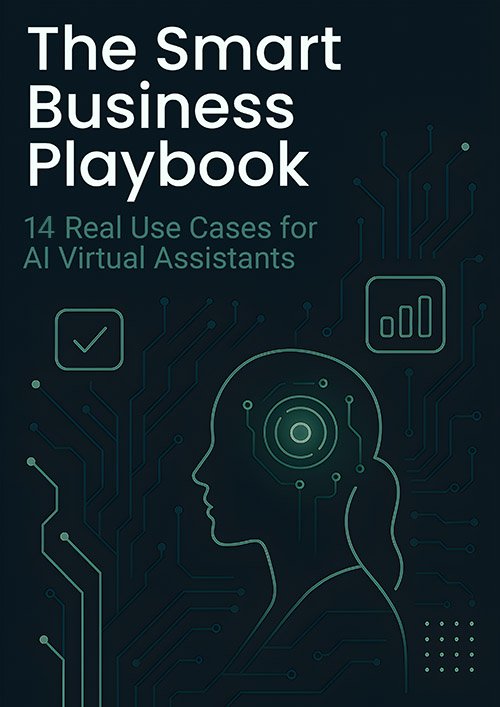To build competitive new hire compensation packages, you'll need to implement seven key components: market-aligned base pay, performance-based incentives (5-30% of salary), all-encompassing benefits with health and retirement matching, flexible work arrangements, professional development opportunities ($2000 annual investment), clear advancement paths, and work-life balance programs. Companies using these elements see 34% better retention rates and 24% higher profit margins. These proven strategies unleash the full potential of your talent acquisition efforts.
Key Takeaways
- Conduct thorough market research to establish competitive base pay rates aligned with industry standards and local market conditions.
- Structure clear performance-based bonus tiers between 5-30% of base salary tied to measurable KPIs and company objectives.
- Offer comprehensive health insurance and retirement plans with employer matching to create an attractive benefits foundation.
- Provide professional development opportunities through annual training stipends and tuition reimbursement programs of $2,000 combined.
- Implement flexible work arrangements including remote options and hybrid schedules to attract and retain top talent.
Understanding Market-Competitive Base Pay

While many organizations rely on gut instinct to set compensation, market-competitive base pay requires a data-driven approach backed by detailed research.
You'll need to conduct thorough market research to understand current industry standards and align your compensation packages with employee expectations. Studies show that offering above-market pay rates directly correlates with improved retention and reduced turnover costs.
Market research and competitive pay rates are essential for employee retention – invest in your people to reduce costly turnover.
To optimize your compensation strategy, you should regularly analyze competitors' pay scales and implement performance-based compensation structures that motivate top talent.
Don't skip discussing base pay during recruitment – being transparent about competitive pay can streamline your hiring process and prevent the 40-day average time-to-fill from stretching even longer.
Structuring Performance-Based Bonuses and Incentives
When structuring performance-based bonuses, you'll need to establish clear tiers that outline specific achievement levels and their corresponding rewards, typically ranging from 5% to 30% of base salary based on performance metrics.
You can maximize employee motivation by creating transparent benchmarks tied to both individual and organizational goals, which research shows can boost productivity by up to 30%.
Your bonus structure should include measurable key performance indicators (KPIs) that align with company objectives, enabling regular assessment and feedback during performance reviews.
Bonus Tiers and Metrics
Since employee motivation directly correlates with clear performance metrics, structuring a well-defined bonus tier system is essential for new hire compensation packages.
You'll want to establish distinct bonus tiers that align with specific performance targets, typically starting at 5% of employee salary for meeting basic goals and scaling up to 15% for exceptional achievements.
When developing your compensation strategy, you'll need to implement transparent performance metrics that employees can easily track.
Employers must utilize data analytics to monitor progress against these benchmarks, ensuring fair distribution of performance-based bonuses.
Consider incorporating quarterly reviews to assess progress and adjust targets as needed.
Research shows that 75% of employees demonstrate higher motivation levels when they understand how their performance impacts their total compensation.
Clear Achievement Benchmarks
Effective performance-based bonuses require clear, measurable achievement benchmarks that connect directly to company objectives. When designing your compensation package strategy, you'll need to establish transparent metrics that help employees understand how their performance impacts their earnings.
| Achievement Level | Performance Bonus | Requirements |
|---|---|---|
| Entry Tier | 5-10% | Meet basic targets |
| Advanced Tier | 11-15% | Exceed quarterly goals |
| Expert Tier | 16-20% | Lead team initiatives |
| Elite Tier | 21%+ | Drive company growth |
To maintain pay equity and guarantee competitive compensation, you'll want to analyze historical performance data when setting benchmarks. Regular performance reviews help track progress and allow for necessary adjustments to bonus structures. The benefits they offer should motivate employees while remaining aligned with your organization's financial objectives and industry standards.
Designing Comprehensive Benefits Packages

As organizations compete for top talent in today's dynamic job market, designing extensive benefits packages has become a strategic imperative.
You'll need to prioritize health insurance coverage and retirement savings plans with employer matching to establish a solid foundation. Integrate flexible benefits that reflect modern workplace demands, including remote work options and adaptable schedules.
To maximize engagement, you should implement performance-based compensation structures that align with company objectives while offering professional development opportunities through tuition support and skill-building programs. Additionally, incorporating employee onboarding practices can enhance the overall experience for new hires and support long-term retention.
Strategic compensation tied to performance, paired with robust development programs, creates a powerful framework for sustaining employee engagement.
It's essential to maintain your package's competitiveness by regularly collecting employee feedback and monitoring industry trends.
Remember that a well-designed benefits strategy goes beyond basic compensation, addressing work-life balance and long-term career growth to effectively attract and retain valuable talent.
Implementing Flexible Work Arrangements
While traditional work models continue to evolve, implementing flexible work arrangements has become a cornerstone of competitive compensation packages. Your ability to attract new talent increasingly depends on offering remote work options and flexible work hours, as 76% of employees seek location flexibility and 93% desire control over their schedules.
By incorporating these employee benefits into your compensation offerings, you'll enhance work/life balance and boost employee satisfaction.
- Implement hybrid schedules and remote work options to retain talent, considering 39% of employees would rather quit than return to traditional office settings.
- Design flexible work hours that allow employees to manage their time autonomously, driving productivity and morale.
- Regularly evaluate and adjust policies based on workforce feedback to maintain competitive advantage in talent acquisition.
- Additionally, leveraging local market insights can help tailor flexible arrangements to better suit employee preferences and expectations.
Offering Professional Development Opportunities

You'll strengthen your company's retention rates by up to 34% through strategic professional development investments, including annual stipends of $500 for training materials and $1,500 for tuition reimbursement programs.
These targeted allocations empower your employees to pursue certifications, workshops, and degree programs that align with both individual career aspirations and organizational objectives. Additionally, organizations using training gap analysis achieve a 35% reduction in turnover.
Training Budget Benefits
Organizations that invest in employee development gain a considerable competitive advantage, with data showing a 24% higher profit margin compared to those that don't prioritize training.
You'll find that incorporating a training budget into compensation packages attracts top talent, with 68% of candidates prioritizing professional development opportunities when choosing employers.
A well-structured training budget can greatly boost job satisfaction and retention, as 94% of employees stay longer at companies investing in their career advancement.
- Annual stipends of $500 for professional development materials enable targeted skill enhancement
- Tuition reimbursement programs up to $1,500 support employee higher education pursuits
- Access to workshops, conferences, and online courses creates diverse learning opportunities
These strategic investments in employee growth deliver measurable returns while strengthening your organization's competitive position in the talent market.
Career Growth Pathways
Building on the value of training investments, structured career growth pathways amplify professional development impact across your organization.
When you combine tuition reimbursement of $1,500 annually with a $500 training stipend, you'll create a thorough development package that attracts and retains top talent.
To maximize these benefits, establish clear advancement paths through mentorship programs that connect employees with experienced leaders.
You'll notice higher retention rates, as 94% of employees stay longer at companies investing in their career growth.
Structure your pay and benefits around professional development milestones to incentivize continuous learning.
Creating Clear Career Advancement Paths
While many companies focus primarily on base salary and benefits, establishing clear career advancement paths proves equally essential for attracting and retaining top talent.
Employers who implement structured development programs see 30% higher engagement rates and 41% lower turnover. You'll need to align compensation data with career progression milestones and conduct regular performance reviews to create transparent advancement criteria.
- Design mentorship opportunities that enable employees to take concrete steps toward their career goals.
- Link performance metrics directly to promotion requirements, increasing productivity by 12%.
- Implement internal mobility programs that showcase available growth opportunities within the organization. Additionally, consider leveraging effective mentorship programs to enhance employee satisfaction and retention.
Building Work-Life Balance Programs

As companies compete for top talent, extensive work-life balance programs have become a crucial differentiator in compensation packages.
You'll need to implement flexible scheduling options, as 76% of employees seek greater control over their work hours. Consider offering unlimited paid vacation days to boost morale and productivity, while providing mental health days and counseling services to support employee well-being.
Data shows that strong work-life balance initiatives can reduce turnover by 30%, making these programs a strategic investment. Additionally, organizations that prioritize employee engagement often see improved retention rates, further enhancing their competitive edge.
To maximize effectiveness, you should provide remote work resources, including home office stipends or coworking space access. This thorough approach demonstrates your commitment to employee wellness while creating a competitive advantage in talent acquisition and retention.
Focus on building programs that offer both flexibility and support to meet diverse employee needs.
Frequently Asked Questions
What Are the 3 P's of Compensation?
You'll find compensation built on three pillars: Pay (salary, market-driven compensation), Perks (benefits, work flexibility), and Promotion (career advancement opportunities), creating a strategic structure that drives employee retention and performance.
What Is an Ideal Compensation Package Expected to Do?
Like a well-oiled machine, your ideal compensation package should drive salary satisfaction, maintain benefits balance, align with market trends, boost employee retention, and offer performance incentives while ensuring compensation fairness.
What Should Be Included in a Compensation Package?
You'll need base salary, health benefits, retirement plans, stock options, performance bonuses, relocation assistance, and paid time off to create a competitive and thorough compensation package.
How Do You Calculate Compensation for a New Hire?
You'll need to conduct market salary analysis, factor in employee experience, adjust for location, assess industry trends, evaluate benefits packages, and consider performance incentives to determine competitive new-hire compensation.


